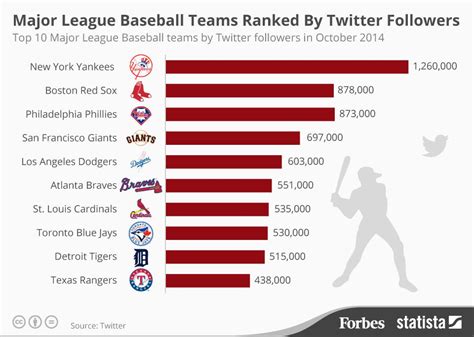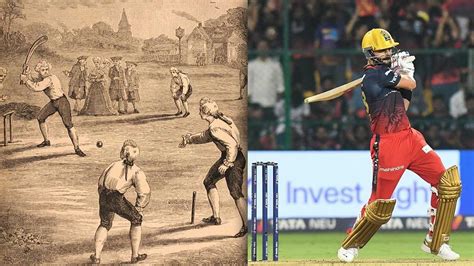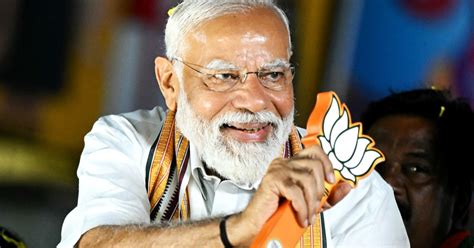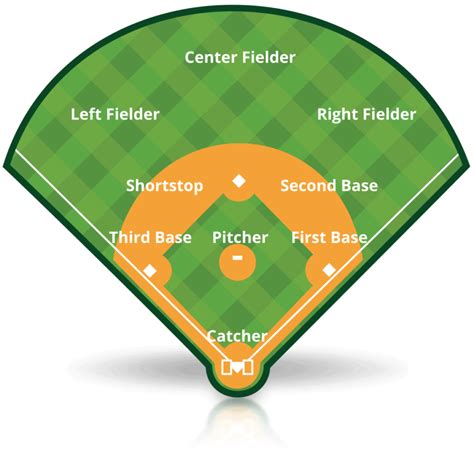Explore Major League Baseball’s top teams, their historical journeys, fan engagement strategies, and insights into future trends and team popularity.Welcome to our comprehensive guide on Major League Baseball (MLB) and its most popular teams! As one of America’s oldest and most beloved sports, MLB has captured the hearts of millions across the globe. In this article, we’ll dive into the legendary teams that have shaped the league, exploring their rich histories, fan engagement strategies, and the key factors that contribute to their popularity. From iconic franchises like the New York Yankees to beloved underdogs, we’ll take you on a journey through the ups and downs of these teams, highlighting their historical success and future potential. Whether you’re a lifelong fan or new to the game, our guide will offer valuable insights and answers to your pressing questions about MLB’s vibrant landscape. Join us as we celebrate the passion and excitement that define America’s favorite pastime!
Overview Of Major League Baseball’s Top Teams
When discussing the Major League, several teams stand out due to their immense popularity and captivating fan bases. Here’s a closer look at some of these elite franchises:
- New York Yankees: Known as one of the most successful teams in sports history, the Yankees boast 27 World Series championships and a global fan base that stretches far beyond the Bronx. Their iconic pinstriped uniforms and rich history make them a cornerstone of Major League Baseball.
- Los Angeles Dodgers: With a storied franchise history and recent successes, including a World Series title in 2020, the Dodgers have cultivated a passionate following. They play in one of the largest markets in the USA, amplifying their popularity.
- Boston Red Sox: The Red Sox are renowned for their historic rivalry with the Yankees and their devoted fan community. After breaking the Curse of the Bambino in 2004, they have won several championships, further solidifying their status in the Major League.
- Chicago Cubs: Famous for their 108-year championship drought, the Cubs have a storied fan base known as the Cubbie Blue. Their win in 2016 ended a long wait and significantly increased their popularity.
- San Francisco Giants: Boasting multiple championships in recent years, the Giants’ success on the field has helped them gain a loyal following. Their picturesque ballpark and vibrant culture draw fans in droves.
- St. Louis Cardinals: With a rich history that includes 11 championships, the Cardinals are one of the most successful franchises in Major League Baseball. They enjoy a passionate local fan base and are known for their strong traditions.
These teams are not just sports organizations; they represent a cultural phenomenon that resonates with millions of fans. Their impact, both historically and in contemporary society, makes them integral parts of the Major League narrative.
Key Factors Behind Major League Team Popularity
When analyzing the Major League teams that resonate most with fans, several key factors emerge that contribute to their popularity. Understanding these elements can provide insights into what makes certain teams stand out in the competitive world of baseball.
By recognizing these key factors behind the popularity of Major League teams, stakeholders can better understand how to cultivate and maintain strong fan bases in the ever-evolving landscape of baseball.
Historical Success: A Major League Team’s Journey
One of the most defining aspects of a Major League team’s identity is its historical success. The journey of a franchise often shapes its brand, fanbase, and reputation within the sport. Teams with a rich history of winning championships typically enjoy a loyal following and attract new fans willing to join side with celebrated legacies.
Championship victories act as a cornerstone of a team’s history, with each win contributing to the narrative of triumph and resilience. For instance, franchises like the New York Yankees and the St. Louis Cardinals have dominated the sport, each collecting a plethora of World Series titles that solidify their status in Major League history. Their success creates an aura of prestige, making them attractive options for new fans and further engaging existing ones.
Moreover, historical rivalries can elevate a team’s prominence. The fierce competition between teams, underscored by memorable games and playoff encounters, contributes to the lore of Major League Baseball. This aspect not only fuels fan engagement but also draws attention to the sport as a whole, keeping the narrative alive through generations.
Across the Major League, franchises leverage their historical successes as part of their marketing strategies. Celebrating anniversaries of key victories and recognizing legendary players through memorabilia and events allows teams to connect past achievements with the present day, drawing in fans who appreciate such rich traditions.
The journey of a Major League team’s historical success is a testament to its ability to engage, inspire, and maintain a passionate fanbase. These stories of perseverance, achievements, and the deep-rooted connection to the sport ensure that the legacy of Major League Baseball endures through time.
Fan Engagement Strategies Of Major League Teams
Engaging fans is a critical component for the success of any team in the Major League. Teams are increasingly leveraging various strategies to enhance fan interaction, improve attendance, and build loyalty. Here are some key approaches used by Major League teams to boost fan engagement:
- Interactive Social Media Campaigns: Teams actively use platforms like Twitter, Instagram, and Facebook to create interactive campaigns that encourage fan participation, contests, and live polls during games.
- Community Outreach Programs: Many Major League teams run programs that involve local communities. These initiatives often include youth baseball clinics, charity events, and partnerships with schools to foster closer ties with fans.
- Enhanced Game-Day Experiences: Game-day experiences have been transformed with improved stadium amenities, themed nights, and entertainment options that cater to diverse fan preferences, ensuring that fans have memorable experiences during matches.
- Loyalty Programs: Teams offer loyalty programs that reward fans with points for attending games, purchasing merchandise, or interacting with the team on social media. These points can be redeemed for exclusive merchandise, tickets, or experiences.
- Technology Utilization: Utilizing apps and digital platforms, teams provide fans with real-time updates, interactive content, and purchase options, enhancing the overall experience whether fans are in the stadium or watching from home.
- Engaging Content Creation: Teams are creating engaging content such as behind-the-scenes videos, player interviews, and game highlights to maintain interest and keep fans connected with the team throughout the season.
Through these innovative strategies, Major League teams not only foster repeated attendance but also cultivate a lasting love for the game, ensuring that their fan base remains active and engaged year after year.
The Future Of Major League Baseball Teams
The future of Major League Baseball teams looks promising as they adapt to emerging trends and evolving fan expectations. With advancements in technology, teams are exploring new ways to enhance the fan experience, both in-stadium and through digital platforms. Cutting-edge analytics are being used not only for player performance but also for audience engagement, allowing teams to tailor their outreach strategies more effectively.
Sustainability is another critical focus for Major League teams moving forward. Many franchises are actively working towards implementing more environmentally friendly practices, from energy-efficient ballparks to community-based programs aimed at reducing their carbon footprints. This alignment with broader societal values is essential for attracting younger fans who prioritize sustainability.
In addition, the evolution of broadcasting rights and streaming services presents both challenges and opportunities. Teams are exploring innovative ways to reach audiences through mobile applications and social media platforms, creating content that resonates with fans while ensuring they remain connected to their favorite teams. This shift could redefine how games are consumed, breaking down geographical barriers and fostering a more diverse fan base.
The Major League landscape will also likely witness shifts in team compositions as franchises leverage international scouting to find the next wave of talent. The global reach of baseball continues to expand, with players from various countries making significant impacts in the league, enriching the competition and cultural dynamics of the teams.
As Major League Baseball teams look to the future, they will need to continue embracing change and innovation while remaining rooted in the rich traditions of the sport. By fostering a connection with fans, embracing sustainability, and adapting to modern broadcasting, these teams can ensure they remain integral parts of their communities and the hearts of baseball aficionados around the world.
Frequently Asked Questions
What are the most popular teams in Major League Baseball?
The most popular teams in Major League Baseball include the New York Yankees, Los Angeles Dodgers, Boston Red Sox, and Chicago Cubs, among others.
How are team rankings determined in MLB?
Team rankings in MLB are determined by a combination of factors including win-loss records, playoff appearances, and fan engagement metrics.
What role do historical success and championships play in a team’s popularity?
Historical success and championships greatly enhance a team’s popularity, as fans often feel a strong connection to teams with rich legacies and frequent postseason appearances.
How does regional support affect team popularity?
Regional support plays a significant role in a team’s popularity, as local fandom, community involvement, and geographical proximity can greatly influence a team’s following.
What impact do star players have on the popularity of a team?
Star players significantly boost a team’s popularity by attracting fans through their on-field performance, charisma, and marketability.
How do social media platforms influence MLB team popularity?
Social media platforms influence MLB team popularity by providing fans with real-time updates, engagement opportunities, and a space for building vibrant fan communities.
What are some emerging teams gaining popularity in MLB?
Emerging teams that are gaining popularity in MLB include the Atlanta Braves and San Diego Padres, who have recently seen success and increased fan engagement.









